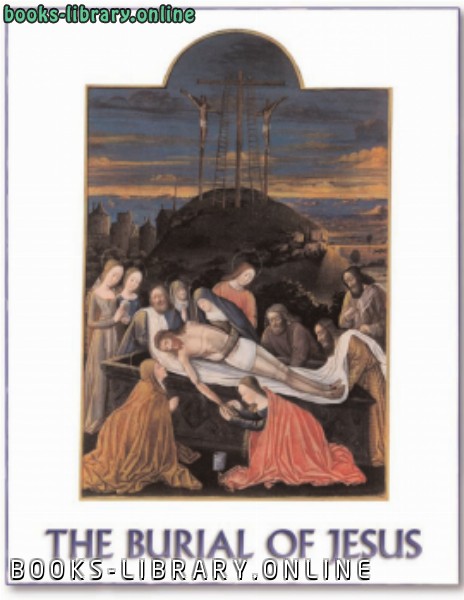📘 قراءة كتاب The Burial of Jesus أونلاين


Introduction v
What Did Jesus’ Tomb Look Like? 1
By Jodi Magness
Did a Rolling Stone Close Jesus’ Tomb? 9
By Amos Kloner
Does the Holy Sepulchre Mark the Burial of Jesus? 15
By Dan Bahat
The Garden Tomb: Was Jesus Buried Here? 27
By Gabriel Barkay
The Garden Tomb and the Misfortunes of an Inscription 37
By Jerome Murphy-O’Connor
Jerusalem Tombs from the Days of the First Temple 41
By Gabriel Barkay and Amos Kloner
All in the Family 49
By Richard J. Bauckham
Notes 59
What do we know about where Jesus may have died and where he was buried? This collection of articles from the
pages of Biblical Archaeology Review and Bible Review magazines presents the latest in scholarship on those
key subjects.
In “What Did Jesus’ Tomb Look Like?” Jodi Magness traces the evolution of Jewish burial customs from before the
destruction of the First Temple in 586 B.C. to the first century A.D., noting in particular the differences between the
burials of the wealthy and those of the poor.
Amos Kloner examines one specific aspect of Jewish burial caves when he asks “Did a Rolling Stone Close Jesus’
Tomb?” Kloner also notes that in the first century A.D. it was the common custom among Jews to return to a tomb
three days after a burial to confirm that the relative they had just interred there was indeed dead.
Where was Jesus buried? That key question is addressed in three articles: In “Does the Holy Sepulchre Mark the
Burial of Jesus?” Dan Bahat lays out the case for the traditional location.
Another spot that has been championed as the final resting place of Jesus is examined in depth by Gabriel Barkay
in “The Garden Tomb: Was Jesus Buried Here?” Barkay includes a detailed description of this spot, which is popular
with some pilgrims.
Jerome Murphy-O’Connor, in “The Garden Tomb and the Misfortunes of an Inscription,” recounts the strange tale
of an inscription that was once touted as proving that Jesus was indeed buried in the Garden Tomb.
What were Jewish burials like in the era before Jesus? Gabriel Barkay and Amos Kloner guide us through
“Jerusalem Tombs from the Days of the First Temple,” noting how Jewish burial customs changed significantly over
the centuries.
This collection concludes with a consideration of the relatives of Jesus, many of whom are little known today
though they are mentioned, albeit briefly, in the New Testament and in the earliest Christian writings. Learn about this
obscure, though important, aspect of Jesus’ life in Richard Bauckham’s “All in the Family.”
Comparison of Religions
College of Comparative Religions
Comparison of Heavenly Religions
Comparison of Religions Ahmed pdf
Comparative book of religions
The emergence of the science of comparative religions among Muslims and Westerners
Comparison of Heavenly Religions
Definition of heavenly religions
Search for heavenly religions
سنة النشر : 2007م / 1428هـ .
حجم الكتاب عند التحميل : 2.4 ميجا بايت .
نوع الكتاب : pdf.
عداد القراءة:
اذا اعجبك الكتاب فضلاً اضغط على أعجبني و يمكنك تحميله من هنا:

شكرًا لمساهمتكم
شكراً لمساهمتكم معنا في الإرتقاء بمستوى المكتبة ، يمكنكم االتبليغ عن اخطاء او سوء اختيار للكتب وتصنيفها ومحتواها ، أو كتاب يُمنع نشره ، او محمي بحقوق طبع ونشر ، فضلاً قم بالتبليغ عن الكتاب المُخالف:
 قبل تحميل الكتاب ..
قبل تحميل الكتاب ..
يجب ان يتوفر لديكم برنامج تشغيل وقراءة ملفات pdf
يمكن تحميلة من هنا 'http://get.adobe.com/reader/'


 منصّة المكتبة
منصّة المكتبة 